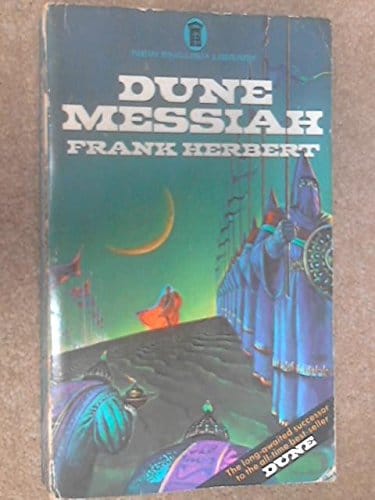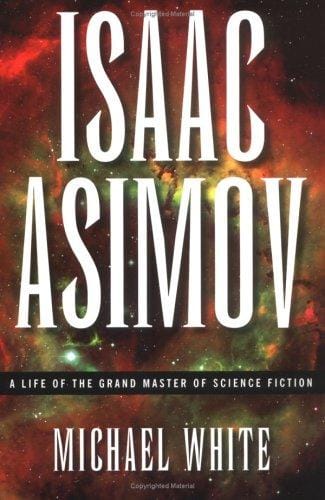Dune Messiah: Themes, Characters, and Legacy
Discover the depth of Frank Herbert's Dune Messiah, examining its plot, characters, themes, and lasting influence on the science-fiction genre.

Introduction
Dune Messiah, published in 1969, is the second novel in Frank Herbert’s ground-breaking Dune saga. Set twelve years after the events of Dune, the book follows Emperor Paul Atreides as he grapples with the paradox of being both messiah and tyrant. While its predecessor focused on the rise of a charismatic leader, Dune Messiah dissects the price of that ascent, exposing the political, religious and psychological costs of absolute power. The result is a thought-provoking study that rewards careful reading and invites spirited debate.
The Narrative Continuum
In contrast to the sweeping heroism of the first novel, Dune Messiah delivers a quieter, more intimate narrative that scrutinizes the aftermath of revolution. Paul now rules a galaxy-spanning jihad responsible for billions of deaths, and his prescient visions show even darker futures if he resists destiny. The plot centers on a conspiracy orchestrated by the Bene Gesserit, the Spacing Guild, and the Tleilaxu to unseat Paul through a ghola assassin named Hayt. By narrowing the scope, Herbert amplifies tension and moral ambiguity.
Key Characters
Although Paul Atreides remains the focal point, Dune Messiah thrives on its ensemble cast. Lady Jessica is physically absent, yet her training echoes in Paul’s every decision. Chani, consort and only true confidante, personifies the conflict between love and empire. Alia, born with ancestral memories, suffers under public adoration that borders on worship. Duncan Idaho’s resurrected ghola version, Hayt, confronts programmed loyalty versus reclaimed humanity, symbolizing the cost of manipulation. Even minor players like the Face Dancer Scytale and Princess Irulan add layers of intrigue, highlighting the novel’s rich psychological tapestry.
Dominant Themes
Power and Responsibility
Frank Herbert does not celebrate power; he interrogates it. In Dune Messiah, Paul’s absolute authority becomes a prison of inevitability. Every choice he makes reverberates across the Imperium, and each attempt to soften the jihad’s violence only intensifies his followers’ fanaticism. Herbert thus exposes the paradox that great power can remove, rather than expand, personal agency. Readers witness how prophetic vision, once seen as the ultimate advantage, reduces Paul to an observer of his own tragedy, incapable of steering away from the blood-soaked path.
Religion and Myth
Herbert also scrutinizes how religious myth can fossilize living individuals into icons. Paul’s Fremen allies interpret his clairvoyance as divine mandate, transforming political decisions into holy writ. Meanwhile, the priesthood that grows around Maud'Dib manipulates scripture to maintain control, proving that faith can be weaponized as effectively as any crysknife. By illustrating the feedback loop between prophecy and belief, Herbert warns that societies often craft spiritual narratives not for enlightenment but for social cohesion, sometimes at the expense of truth and freedom.
World-Building and Politics
Dune Messiah expands the universe introduced in Dune by detailing the machinations of fringe powers. The Tleilaxu’s genetic engineering, the Guild’s spice addiction, and the Bene Gesserit’s breeding programs converge in a delicate balance that could crumble with a single misstep. Herbert’s meticulous attention to economic leverage—especially control of the spice melange—grounds the novel’s more mystical elements in stark realpolitik. This interplay between ecological scarcity and political ambition keeps the saga feeling unsettlingly relevant.
Symbolism and Literary Style
Stylistically, Herbert adopts a dense, allusive prose that mirrors the complexity of his subject matter. Epigraphs from Princess Irulan’s histories foreground each chapter, signaling that every event in the story will later be filtered through political propaganda. Motifs of blindness and vision pervade the text, foreshadowing Paul’s literal loss of sight and metaphorical enlightenment. These layered symbols invite multiple readings, encouraging fans to revisit the novel and discover fresh meanings with each pass.
Reception and Criticism
At release, Dune Messiah polarized critics and fans who expected another grand adventure. Some decried the novel as slow or bleak, yet many now view its subversive tone as essential to the series’ lasting power. By undermining the heroic narrative constructed in Dune, Herbert challenged genre conventions and reader expectations alike. Contemporary scholars praise the book’s willingness to interrogate messianic tropes, drawing parallels to modern political discourse about charismatic rulers and the cults that arise around them.
Influence on Science Fiction
Dune Messiah’s exploration of power dynamics, ecological limits, and religious manipulation has echoed through decades of science fiction. Authors from Octavia Butler to Ann Leckie have cited Herbert’s willingness to question heroism as a foundational influence. The book’s cautionary stance regarding prescience can be felt in narratives as diverse as Foundation’s psychohistory adaptations and Star Wars’ deconstruction of Jedi prophecy. Film and television adaptations of Dune regularly borrow elements from Messiah, ensuring that its philosophical questions remain firmly embedded in popular culture.
Final Thoughts
Dune Messiah may lack the cinematic battles and sweeping vistas that endeared Dune to millions, but its introspective depth cements the saga’s reputation for intellectual rigor. By confronting the dangers of hero worship and the corrosive nature of absolute power, Herbert crafted a sequel that feels eerily prescient in today’s tumultuous world. Readers willing to engage with its challenging ideas will find a novel that rewards reflection long after the last page.



